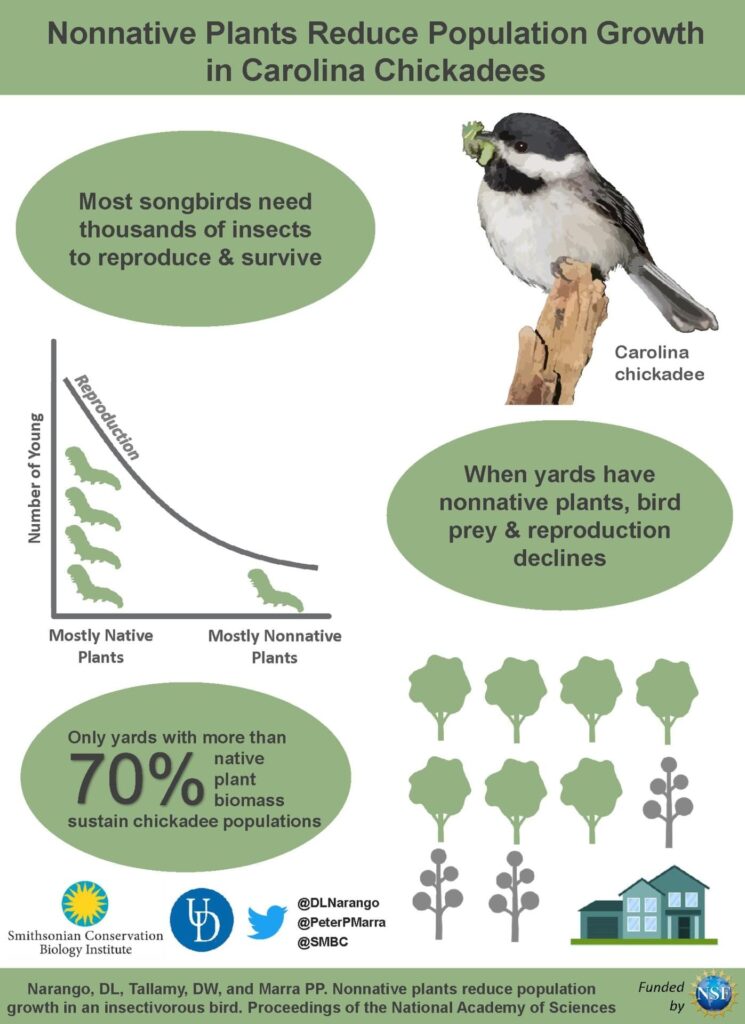
As we continue to experience the devastating effects of climate change and habitat loss, it’s become increasingly important to consider how our actions can impact the environment. We can make a positive impact by choosing plants native to our area.
According to Douglas W. Tallamy, T. A. Baker Professor of Agriculture in the Department of Entomology and Wildlife Ecology at the University of Delaware, using native plants in your garden can significantly impact local ecosystems. In an opinion piece for The New York Times, Tallamy explains that “plants are as close to biological miracles as a scientist could dare admit. After all, they allow us, and nearly every other species, to eat sunlight by creating the nourishment that drives food webs on this planet. As if that weren’t enough, plants also produce oxygen, build topsoil and hold it in place, prevent floods, sequester carbon dioxide, buffer extreme weather, and clean our water. Considering all this, you might think we gardeners would value plants for what they do. Instead, we value them for what they look like. When we design our home landscapes, too many of us choose beautiful plants from all over the world without considering their ability to support life within our local ecosystems.”

In a simple experiment comparing a native white oak and an Asian pear tree of similar size, Tallamy observed 140 caterpillars of 19 different species on the native white oak. In contrast, the Asian pear had only one. The reason for such a big difference, according to Tallamy, is that “plants don’t want to be eaten, so they have loaded their tissues with nasty chemicals that would kill most insects if eaten. Insects eat plants, though, and they achieve this by adapting to the chemical defenses of just one or two plant lineages. So some have evolved to eat oak trees without dying, while others have specialized in native cherries or ashes and so on. But local insects have only just met Asian pears, in an evolutionary sense, and have not had the time — millennia — required to adapt to their chemical defenses. And so Asian pears stand virtually untouched.”

Ornamental plants that seem insect-resistant may sound good for gardeners who don’t want their plants eaten by caterpillars, “but there are serious ecological consequences to such choices,” says Tallamy. He offers the following experiment you could do at home: “This spring, put a chickadee nest box in your yard. If you are lucky, a pair of chickadees will move in and raise a family. While feeding their young, watch what the chickadees bring to the nest: mostly caterpillars. Both parents take turns feeding the chicks, enabling them to bring a caterpillar to the nest once every three minutes. And they do this from 6 a.m. until 8 p.m. for each of the 16 to 18 days it takes the chicks to leave the nest. That’s 350 to 570 caterpillars daily, depending on how many chicks they have. So, an incredible 6,000 to 9,000 caterpillars are required to make one clutch of chickadees. And chickadees are tiny birds: just a third of an ounce. What if you wanted to support red-bellied woodpeckers in your yard, a bird about eight times heavier than a chickadee? How many caterpillars would that take?”

Similarly, many insect species, like the monarch butterfly, rely on specific plants as a food source. Their population may decline if these plants are not present in an area. By choosing native plants that support insect populations with food and shelter, we can help ensure these important pollinators continue to thrive.
Tallamy concludes that “what we plant in our landscapes determines what can live in our landscapes. Controlling what grows in our yards is like playing God. By favoring native species, we can create life, and by using ornamental plants, we can prevent it. An American yard dominated by ornamental plants doesn’t produce nearly the quantity and diversity of insects needed for birds to reproduce. Some might argue that we should just let those birds breed “in nature.” That worked in the past, but now there is not enough “nature” left. And it shows. Many bird species in North America have declined drastically in the past 40 years. Fortunately, more and more gardeners are realizing that their yards offer one of the most empowering conservation options and are sharing their properties with the nature around them.”

To learn more about Doug Tallamy, visit his latest project’s website, Homegrown National Park.
Sources:
- https://www.nytimes.com/2015/03/11/opinion/in-your-garden-choose-plants-that-help-the-environment.html
- https://www.ecolandscaping.org/10/landscaping-for-wildlife/wildlife-habitats/a-chickadees-guide-to-gardening-how-to-create-habitat-for-birds-in-urban-settings/